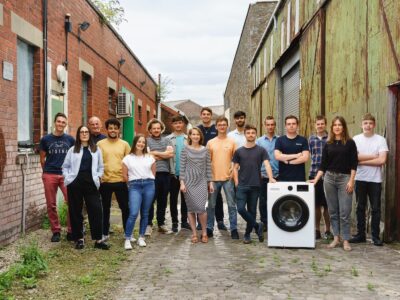Cryptocurrency and blockchain technologies have taken less than a decade to move from the fringes of the financial world and into the mainstream. While this has created a significant (often volatile) new asset class, it has also contributed to new environmental challenges.
As author and consultant Bernard Marr noted in a column for Forbes, it takes a massive amount of computing power and electricity to manage the world’s blockchain transactions. Bitcoin alone consumes an estimated 150 terawatt-hours of electricity each year – roughly equal to what Argentina consumes. Producing that much energy emits about 65 megatons of carbon dioxide into the atmosphere every year, Barr wrote.
In response, the blockchain industry has taken steps to operate more sustainably. Much of the effort involves using renewable energy sources such as solar and wind power to mine data, but that’s not the only thing being done.
One platform with a different approach is KYOTO, a Regenerative Finance (ReFi) blockchain focused on reforestation to operate more sustainably. In August, KYOTO announced that it planted 1 million mangrove trees along the Kenya coastlines of Kirepwe, Diani, Shimoni, and Kigamboni in Tanzania to offset its carbon emissions.
The initiative was completed in July, ahead of KYOTO’s launch. According to a press release, it has already created 80 new jobs. KYOTO claims to be the first blockchain to contribute 25% of each transactional gas fee to offset carbon emissions via reforestation.
“This project is a powerful statement of intent for what we want to achieve in terms of preserving our planet, along with our dedication to the ReFi movement and helping other projects to embark on new ventures that will make the world a better place,” KYOTO co-founder Frank Morey said in a statement.
KYOTO refers to mangroves as nature’s “coastal superheroes” because they are simple to plant and can absorb and store atmospheric carbon dioxide – a primary contributor to global warming. KYOTO’s program is expected to sequester around 308,000 tonnes of carbon before 2075.
The trees are planted about a foot apart and span 28 acres. To maximize the survival rate, planting took place within two meters of a mother tree while factoring in a buffer of 20% extra plants. The project will also use AI technology to record each tree that is planted.

Photo Courtesy KyotoRefi
On its website, KYOTO uses the KYOTO Network to encourage Decentralized Finance (DeFi) protocols and businesses to “passively contribute” toward fighting climate change. The blockchain has developed a solution that aims to keep a “secure and transparent ledger” for the entire supply chain involved in creating and tokenizing carbon assets. One of its environmental goals is to plant a tree “for every person on Earth” by 2030.
According to a news release published on the Coin Telegraph website, the KYOTO token was launched on June 30 and sold out in less than nine hours. The launch brought in nearly 2.4 billion Binance U.S. dollars, which CoinDesk describes as “a U.S. dollar stablecoin issued by crypto exchange Binance and blockchain company Paxos Trust.”
In late August, KYOTO announced the KYOTO Ecosystem Grants Program, which aims to bring more users to the KYOTO blockchain and accelerate investment in carbon-neutral, sustainable initiatives. Available grants will range from $10,000 to $50,000 for community projects and $100,000 and up for ecosystem and infrastructure projects. The program also seeks to accelerate the Regenerative Finance (ReFi) movement and the fight against climate change.

Photo Courtesy Kyotoprotocol
“We anticipate that the industry will experience exponential growth as creators continue to build in the current bear market,” KYOTO co-founder Ashton Hunt said. “By kick-starting this program, we aim to drive a more industry-wide, collaborative effort that results in lasting, sustainable change.”





